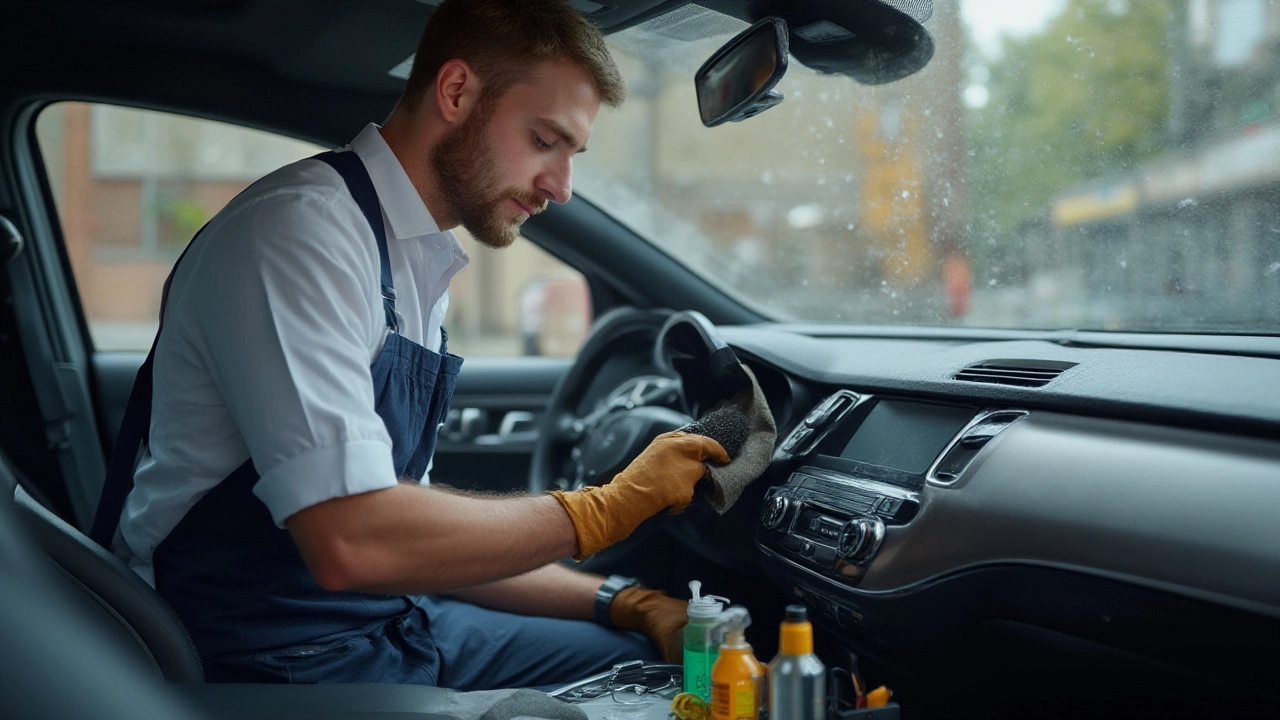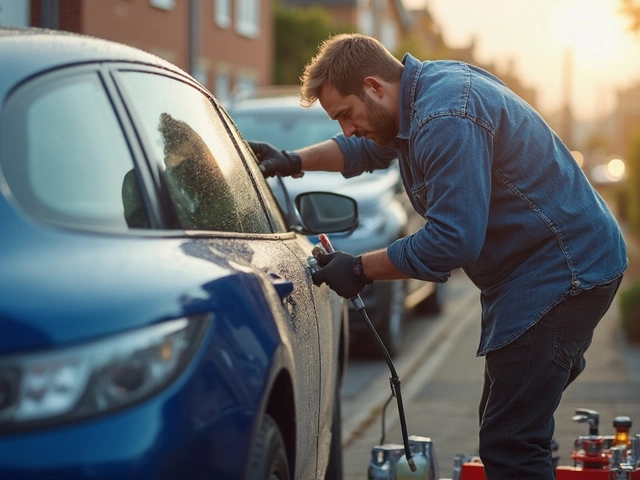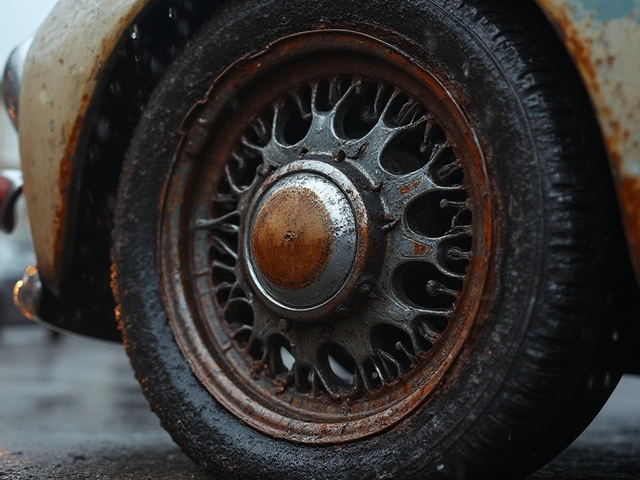Ever wonder why your car's interior never looks quite as fresh as the ones you see at top detail shops or on Instagram? There’s a reason: pro detailers don’t use the same stuff you grab from the discount shelf at the supermarket. In fact, the world inside a real detailer’s kit is way more interesting than you’d imagine—packed with clever tools, smart chemicals, and a bunch of tricks you’d never think up yourself. Some of the most effective weapons against grime aren’t just about what you apply, but how you use it—and trust me, it isn’t rocket science, but there’s some real knowledge at play.
The Core Arsenal: What Chemicals and Cleaners Make the Cut?
Professional detailers take their chemical selection seriously. The difference comes down to concentration, versatility, and results. While most people grab an all-purpose cleaner (APC) from a big-box store, pros reach for concentrated blends like Meguiar's D101, Koch-Chemie Green Star, or Griot’s Garage Interior Cleaner. Why? These solutions cut through grease, body oils, and junk fast—yet they’re gentle enough for dashboards, leather, and touchscreens, especially when diluted right. APCs are rockstars, but detailers know a one-size-fits-all approach doesn’t always cut it. So, they stock up on specialty products: leather conditioners like Colourlock or Lexol (which keep hides soft, not shiny), enzyme-based cleaners for stubborn food or pet stains, and fabric-specific solutions like Optimum Fabric Clean & Protectant.
What about plastics or the sticky buttons on your radio? Professional-grade interior detailers, like CarPro Inside or Sonax Dashboard Cleaner, not only clean but also leave surfaces feeling factory-fresh—no oily residue or glossy fake shine. For glass, they stick with streak-free solutions like Stoner Invisible Glass, avoiding ammonia, which can torch modern window tints. And let’s not forget odor removers. Pros don’t just mask smells; they destroy them at the source with products like Odor-X or Ozone machines—seriously, a quick ozone treatment can erase years of smoke stench or spilled coffee smells in under an hour.
One sneaky pro tip that rarely gets shared? Detailers sometimes blend their own cleaners for special tasks—like mixing a small drop of isopropyl alcohol into a water-based cleaner for quick evaporation and streak-free electronics cleaning. Another? They test every chemical in an unseen spot before going wild, even with trusted products. This saves them from awkward “uh oh” moments with faded plastic or discolored seats. You’ll also spot spray bottles marked with dilution ratios, a tiny detail but a huge timesaver on busy days. It’s not just about what’s in the bottle—it’s about knowing what each surface needs and dialing in your approach, every time.
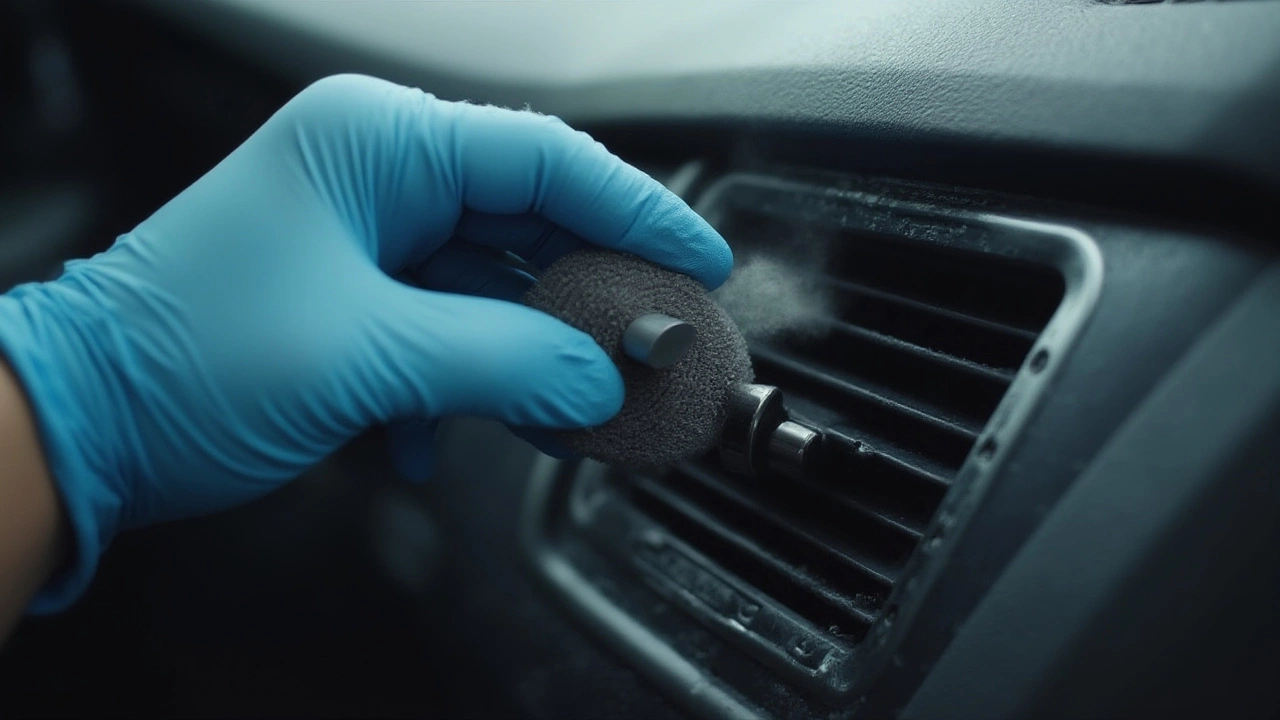
Inside the Detailer’s Toolbox: Brushes, Microfibers, and Game-Changing Gadgets
Let’s leave the spray bottles behind for a second. Even the strongest cleaner won’t save you if you’re using the wrong tools. Professional detailers run a tight arsenal, and they’re picky—sometimes almost weirdly so—about their tools. Their go-to brush? The boar’s hair detailing brush. These soft, dense bristles gently dislodge dust from tight seams around vents, buttons, and badges. Cheap foam swabs or paintbrushes just don’t come close. For carpets and cloth seats, stiff-bristle brushes or compact scrubbers like the Mothers Carpet & Upholstery Brush help work the cleaner deep into fibers without pulling them apart.
Now, let’s talk about the true unsung hero: premium microfiber towels. Not all microfibers are equal. Pros use 300gsm or higher, with loads of nap—the softer and plusher, the better for delicate surfaces. It’s not overkill: these towels trap dust and dirt, dodge scratches on high-gloss screens and plastics, and make buffing out impossible smudges actually, well, possible. You’ll see them color-code their cloths, too—one color for glass, one for seats, another for plastics—just to avoid cross-contamination. Some even cut tags off every towel to keep things perfectly lint-free.
Steamers are a detailer’s secret weapon, especially for sticky cupholders, jammed vents, or seat seams caked with mysterious gunk. A portable unit like the McCulloch MC1275 pumps out pressurized steam that melts grime on contact. Paired with a gentle brush or towel, it wipes away anything from milk spills to road salt stains. And then there are mini vacuum cleaners—pros swear by powerhouse portables like the Rigid wet/dry or Milwaukee M18 because weak suction just spreads dirt around. They use skinny attachments to get into every crevice, under seats, and even behind pedals.
Compressed air guns make “detailing confetti” of stubborn dust inside vents, switches, and tight cracks. For the tricky areas under gear levers or seat rails, nothing works faster. And for those wanted-to-forget pet hairs? Detailers count on rubber pet hair brushes or pumice stones. They’ll pull fur from fabric where vacuums give up. When you add it all up, it’s less about owning a million gadgets and more about choosing the right weapon for every job—like a chef picking the perfect knife for the task.
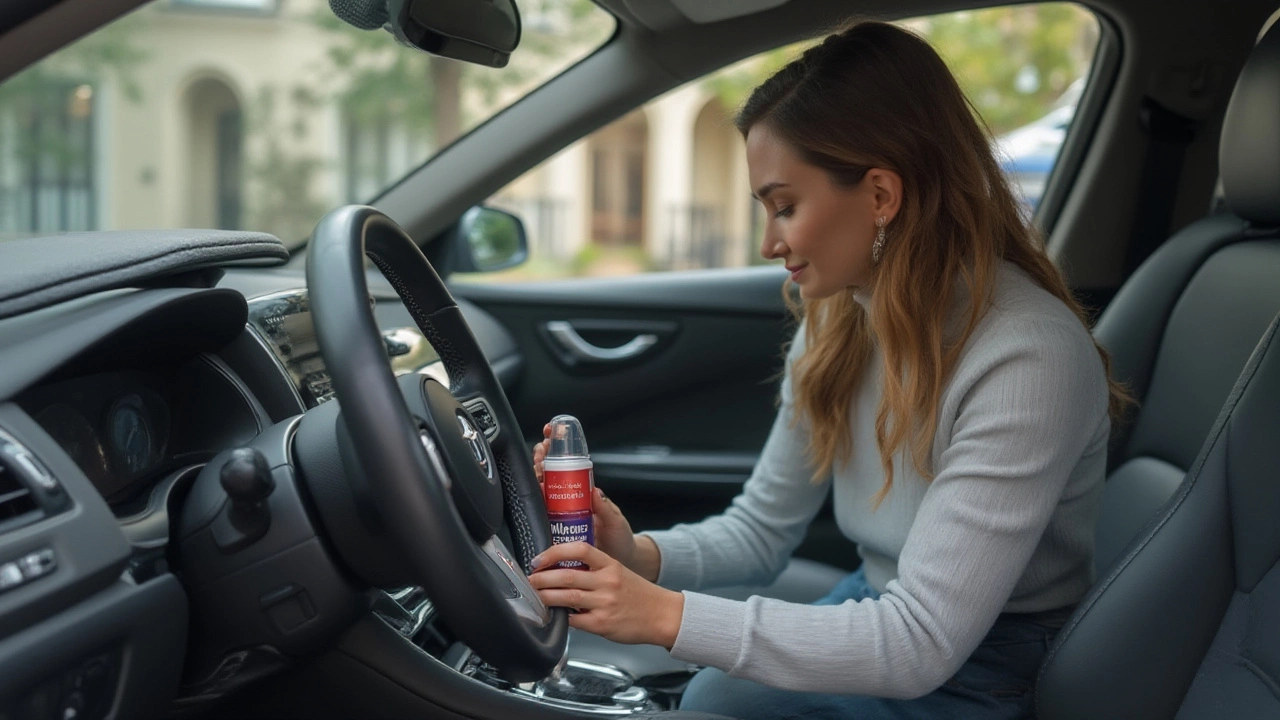
Pro Detailing Steps: The Order, the Mindset, and Finishing Touches
Ask a pro how they clean an interior and you’ll get a process that’s almost ritual—there’s a method to the madness. Rule one: start at the top and work your way down. Dust always falls, so hit the headliner, vents, and dash before seats and carpet. If you’ve ever cleaned carpets first, then looked up only to find dust still drifting down, you know this pain. Pros usually give everything a dry dust-off or vacuum first. This keeps the wet cleaning stage from becoming a muddy mess.
Next is targeted cleaning—applying specialty cleaners only where needed, not soaked all over. On leather, detailers use a soft brush dipped in cleaner to gently work it into the grain; scrubbing too hard or using the wrong product can strip dye or leave blotches. On greasy buttons or handles, a cotton swab dipped in APC gets every nook sparkling. For fabrics, a fine mist from a spray bottle gets the fibers damp before scrubbing, then they extract with a strong wet/vac, pulling dirt out instead of just pushing it around. If odors linger, they don’t go wild with air fresheners. Instead, a shot of ozone or enzyme spray breaks down smell at its source—whether it’s fries under the seat or years of built-up “kid funk.”
Once the big stuff’s done, glass comes last. Tiny tips matter: pros always use two towels—one damp to wipe, one dry to buff—so windows stay streak-free. They roll down windows halfway to get grime at the top edge (the spot almost nobody notices until sunlight makes it blindingly clear). The finishing moves are subtle but make a huge difference. Detailers fluff floor mats with compressed air, realign vent vanes, and wipe seatbelt buckles—yes, even the places nobody sees get attention.
One more pro tip: they always inspect under different lighting, hunting for missed spots. Sometimes a tiny missed smudge means redoing half the dash, but real pros care about the “wow” moment when you step inside. The secret is patience and precision; they work in sections, not skipping steps, and keep tools and towels clean, swapping them out when dirty. For those deep, satisfying results, it’s not just about what you use—it’s about how you use it, and having the patience to get it perfect.

